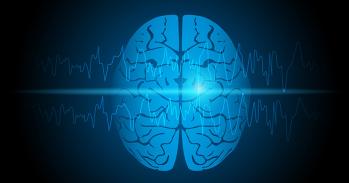
There has been speculation for many years that the human brain lives “on the edge of chaos”, at a critical transition point between randomness and order; but direct experimental evidence has been lacking.
There has been speculation for many years that the human brain lives “on the edge of chaos”, at a critical transition point between randomness and order; but direct experimental evidence has been lacking.
Due to these characteristics, self-organized criticality is intuitively attractive as a model for brain functions such as perception and action, because it would allow us to switch quickly between mental states in order to respond to changing environmental conditions.
Manfred Kitzbichler
Recent research published (in the journal PLoS Computational Biology) by a team led by Cambridge University researchers provides new and compelling data to support this theory.
Using state-of-the-art brain imaging techniques they were able to measure changes in the synchronisation of activity between different regions of the human brain. The results suggest it might be operating in a self-organised critical state - that the brain can spontaneously organise itself at a point on the edge of chaos between order and randomness.
This point at the edge of chaos allows neurones to jump quickly between different states enabling them to alter behaviour as necessary, allowing humans to respond quickly to the environment around them. A similar idea is used in the design of fighter jets - they are designed to be aerodynamically unstable (a state of chaos) and can only be controlled with the aid of computers, though this instability means they are extremely quick to respond to commands.
To support this conclusion, the researchers also investigated the synchronisation of activity in computer models of critical dynamics. It was demonstrated that the brain's self-organised critical state was reflected almost exactly in the computational models. Collectively, these results amount to the strongest evidence yet in favour of the idea that human brain dynamics exist at a critical point on the edge of chaos.
Self-organised criticality (SOC) can emerge spontaneously from complex interactions between many elements in many different physical systems, including avalanches, forest fires, earthquakes, or heartbeat rhythms. The new results tell us that the dynamics of human brain networks, which are the basis for thought, emotion and action, have something in common with very different systems in nature.
"Due to these characteristics, self-organized criticality is intuitively attractive as a model for brain functions such as perception and action, because it would allow us to switch quickly between mental states in order to respond to changing environmental conditions," says Manfred Kitzbichler, one of the authors of the study.
According to Kitzbichler this new evidence for the existence of criticality in human brain function is only a starting point. He continued: "A natural next question we plan to address in future research will be: How do measures of critical dynamics relate to cognitive performance or neuropsychiatric disorders and their treatments?"
The study was conducted by a team from the University of Cambridge, the Medical Research Council Cognition & Brain Sciences Unit, and the GlaxoSmithKline Clinical Unit Cambridge, led by Professor Ed Bullmore.
This work is licensed under a Creative Commons Licence. If you use this content on your site please link back to this page.





